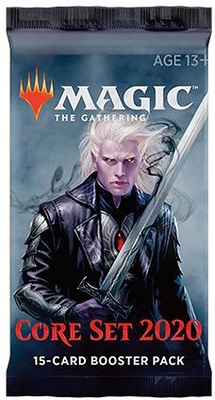Drafting is a lot more nuanced than many realize at first glance. Improving at drafting requires learning numerous heuristics that assist navigating the paths a draft can offer.
One of my favorite level-up moments in Draft is learning how to leverage packs on the wheel. It’s a seemingly small adjustment that does wonders to improve deck quality. Before I delve into how you can leverage the wheel during the draft, it’s important to describe why the wheel is so important.
The Wheel Is Fundamentally Different
Sometimes you take a red card. Then a blue card. Then a red card. Then a blue card. And so on. And then Pack 1, Pick 9 comes around and there are no red cards or blue cards to be found. Your heart sinks. You may regret your decision to take that red card over some white card. But does that make your previous pick wrong? This question is at the heart of where playing the wheel can skyrocket your improvement.
When a pack comes all the way around the table, it presents the only concrete information a draft provides: “The other players at this table have certainly taken the missing cards.” The difference between this and Pack 1, Pick 5 is that you know what those missing cards are, rather than being forced to speculate what colors they could be based on the signals you’ve read. It’s not easy to remember all those cards, and it’s certainly not necessary to succeed in Draft, but it is important to recognize that Pack 1, Pick 9 is the first glimpse into certain information (disregarding noting rarities, which is minimal information). Hence there is a fundamental difference in what you can learn on the wheel.
One of the most popular algorithms used for developing AIs that play games is called Counterfactual Regret Minimization (CRM). This is implemented by having an agent play the game, starting with random actions. Then, after every game, the agent goes back and discerns which actions it regretted and attempts to improve to not make those actions again. (If you’re curious about an application of this and want to delve into the technical aspect, check out DeepStack, a poker AI.) In any pack of a draft, the information you can glean in the first eight picks is less than for the last eight picks, and hence it is easier to understand the ramifications of your decisions in the latter half of a pack.
This is to say, if you want to get better at drafting, you need to pay more attention in the later picks of the pack. See what information you can glean. Use it to understand regret and improve because of it. But that’s also just the abstraction. Once the wheel is more important to you, it can change your real-time draft strategy for the better.
How This Impacts Your Drafts
I first learned tricks of using “the wheel” in Shadows over Innistrad. Not that long ago! I was drafting on Magic Online and Christian Calcano was on Skype. He said, “Take Call the Bloodline because Senseless Rage will come back on the wheel.” I had never considered using information from my expectation of the wheel to inform my current pick. It blew my mind and has made me a better drafter by an order of magnitude.
The wonderful thing about this is that implementing strategies like this acts as a Luigi Ladder. Strategies and tactics that require being mindful of the wheel get you into the habit of monitoring information that helps you improve in the long run, while also improving the quality of your decks immediately. It’s a win-win!
Here are a few other tricks you can use that require paying attention to the wheel. I could write an individual article about each, but here’s the gist:
- Build a backup plan
I could write a whole article about this concept. The idea is that you devise an exit strategy should things go poorly. You note that multiple packs of your Core Set 2020 draft have had Faerie Miscreant. Even though you’re drafting a Selesnya Tokens deck, you could take a flier on a blue card in the middle of the pack over replaceable cards in your colors. This way, if Selesnya completely dries up, you’ve positioned yourself to backdoor into an Azorius Flyers deck!
- Sit down with a plan (soft forcing)
Forcing isn’t a highly advised strategy, but sometimes you observe cards wheeling frequently. The best example of this in recent history is the Slither Blade strategy in Amonkhet Draft. It was one of the best decks in the Draft format and came together because you could reliably get every single copy of this common that was opened because it would always wheel.
This is often referred to as soft forcing. You bias your picks towards some strategy based on commons you expect to wheel. If they don’t wheel, you can always use the powerful cards you have taken and go on with your day. If they do, you can move into a powerful strategy.
- Color density signals
It’s an important note that all the red cards in the wheeling pack are missing. It’s even more important if there were four red cards in that pack, as you can be certain that half the table has taken a red card. Signals are muddy, but the clearest ones come from packs that wheel! I go into this in more depth in my article on reading signals.
There are plenty more where these come from, and I am constantly trying to discern new information and devise strategies that use it. Do you have ideas on how to put it into practice?


